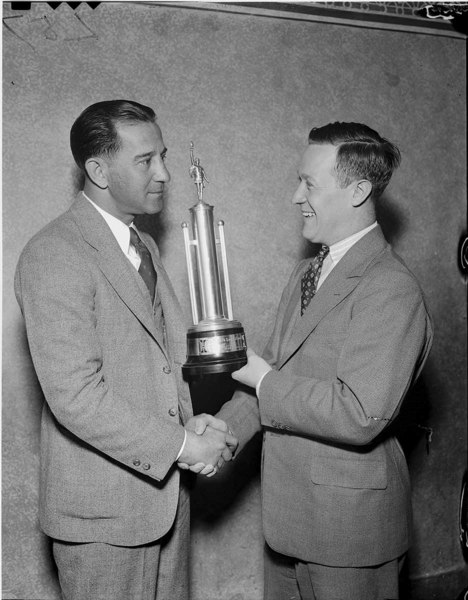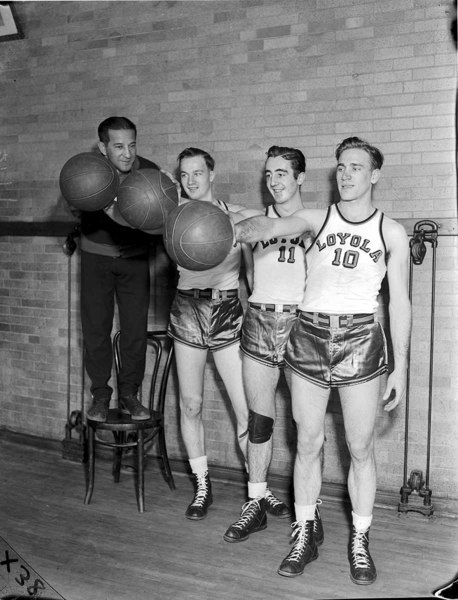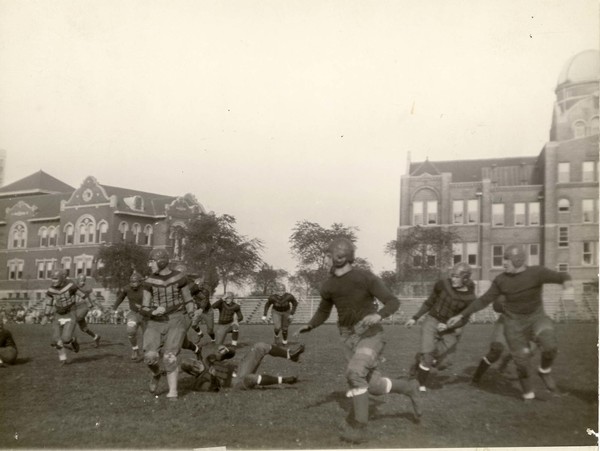Athletics
Leonard Sachs, who came to the university as a basketball coach in 1923, brought Loyola into the first rank of basketball with some of the finest cage teams in the country. Sachs, who was athletic director from 1937 until his death in 1942, wrote one of the greatest chapters in the school's sports history during his nineteen years as coach.
The record books reveal that Sach's "Ramblers" scored a grant total of 11,129 poitns to their opponents 9,348 in winning 223 games with only 130 defeats.
His team went through the 1928-29 season without a loss. The end of the 1927-28 season, all of 1928-29 and the first part of the 1929-30 season saw the Loyola cagers run up a string of 34 consecutive victories. The 1938-39 Ramblers, undefeated in 21 games, played for the national title in New York City in 1939, losing to Long Island University.
The measure of the man was best stated by the Rev. William A. Finnegan, S.J., who at Sachs' funeral said: "His memory will endure at Loyol as a moulder of men, an ideal Catholic gentleman and a loyal friend."
The sport paid its tribute to Sachs when he was admitted to the Basketball Hall of Fame.
Also in 1923, Roger Kiley, who had been an All-American end on the legendary Knute Rockne's Notre Dame teams, became head coach at Loyola. He coached the Rambler eleven from 1923 until 1928, compiling a record of 31 wins, 17 losses and two ties.
Kiley, who today is a Judge of the U.S. Court of Appeals, was succeeded by Dan Lamont, a Rambler right end who played under Kiley and coached the 1928 and 1929 teams. He was followed by Dr. Edwin J. Norton, who received both his undergraduate work and dental training at Loyola and was backfield coach during the 1929 season. He coached the Loyola team which played its final season in 1930.
Among those winning all-Western honors at the time was Lawrence (Bud) Gorman, a full-back in 1924 and 1925. He was chosen the third string fullback on Rockne's All-American selection in 1925. Gorman drowned in 1926 at Macatawa, Michigan, while attempting to save a young girl from drowning. Others included Phil Brennan, an end on the 1928 squad and Tony Lawless, halback on the '28 eleven, and Les Molloy, a fullback on the '29 and '30 teams.
Loyola was the first major university in the country to install a lighting system which permitted the playing of football at night; Loyola was also the first major univerity to drop intercollegiate football.


